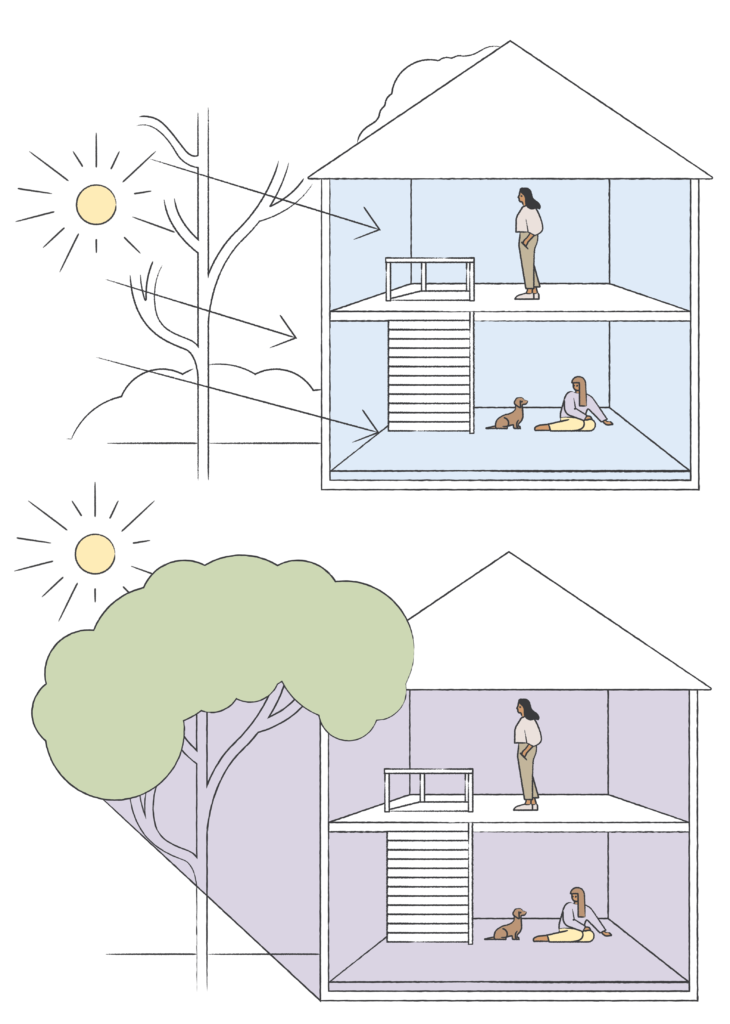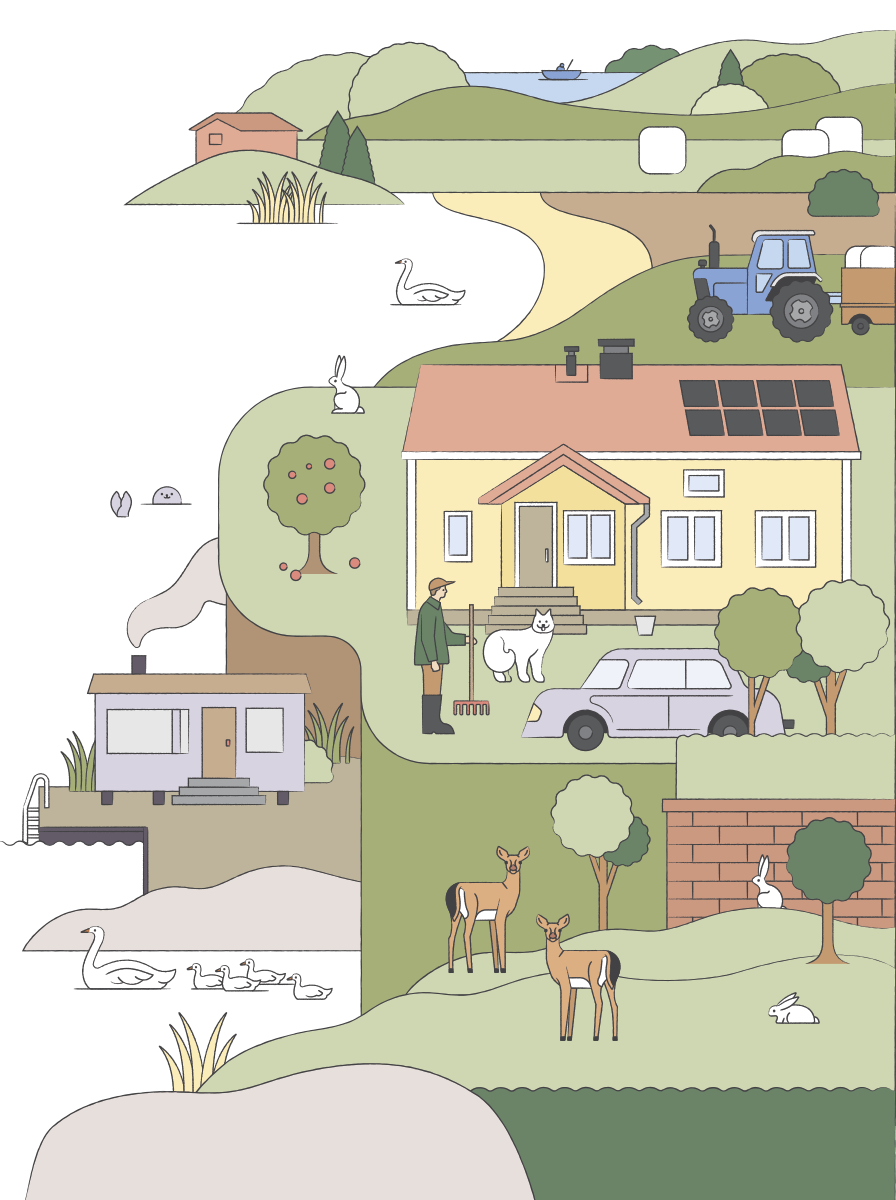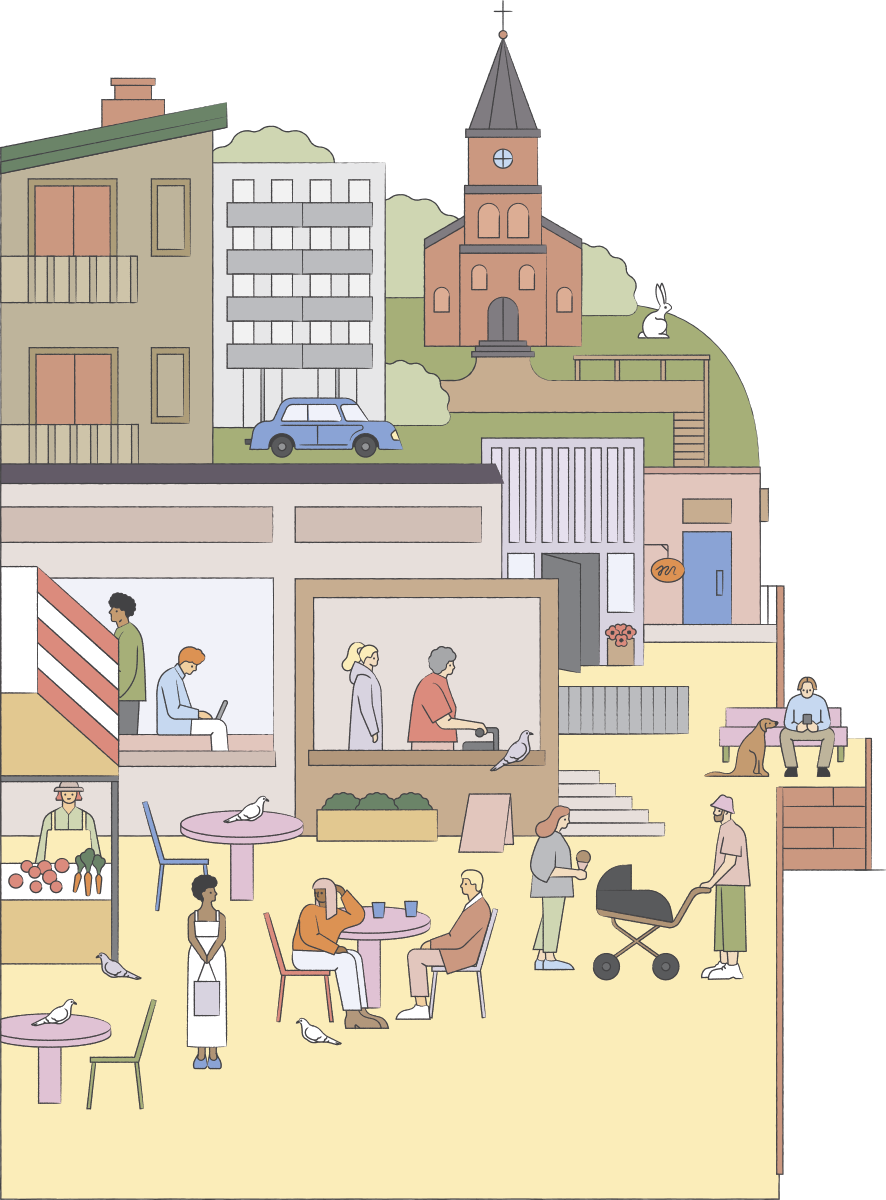Summers are getting hotter because of climate change, which increases the risk of our homes overheating and highlights the need of cooling them. Air-conditioning (ventilation, air source heat pump) increases energy consumption. Solar shading is a better alternative in terms of carbon footprint.
Solar shading means preventing solar heat from entering a building between early spring and autumn. Solar heat is useful in the winter.
Regarding changes that affect the facade of the building, contact your local building control authority.
The further from the house the shading unit is, the bigger the cooling effect. Broad-leaved trees effectively prevent houses from overheating. In the winter when there are no leaves, light is allowed to enter a building, and in the summer the leaves provide pleasant shade. You may want to reconsider felling the trees in your yard because it will take years and decades for the new trees to grow.
Lush vegetation including green roofs and walls will cool the microclimate in the yard, while a paved yard will increase the risk of overheated houses in a climate that is becoming warmer.

Apartments can be protected from excessive solar heat in the summer with the following:
- Plants (trees, bushes, pergolas etc.)
- Structures (eaves, canopies, grating etc.)
- Rollers, window blinds (outside or between glazing) etc.
- When replacing windows, choose products with a small G value (low radiation heat transfer).




